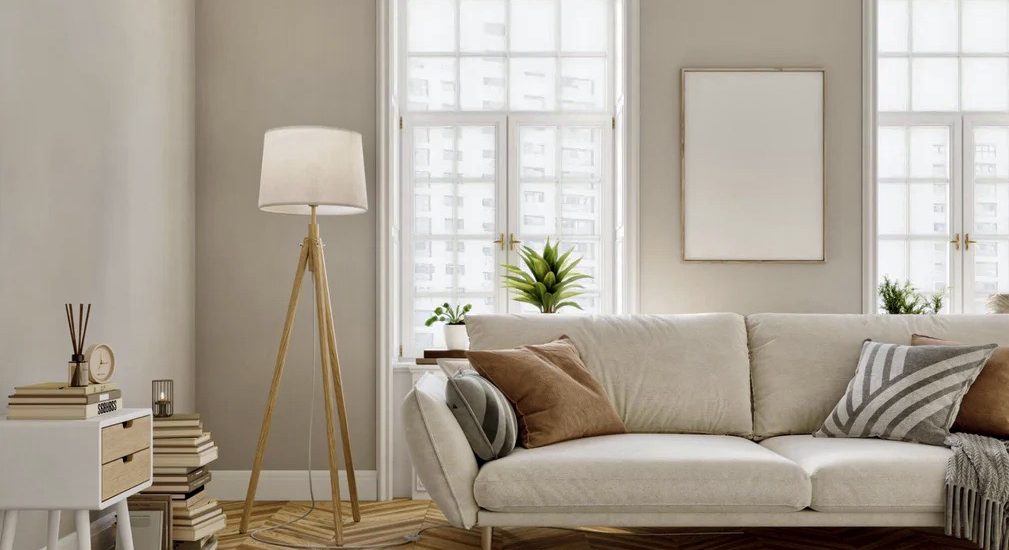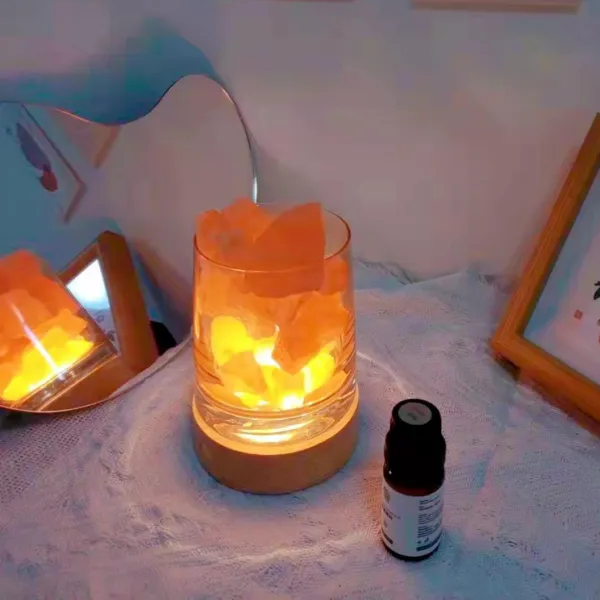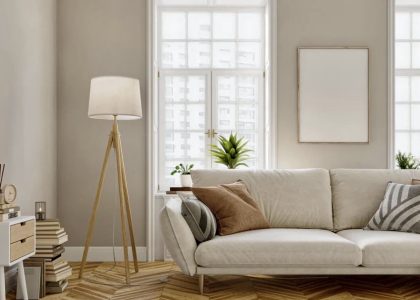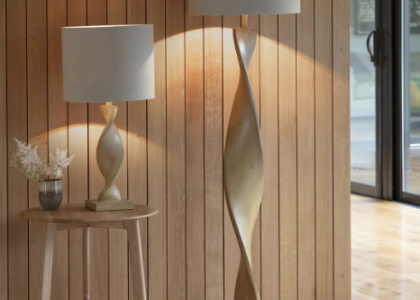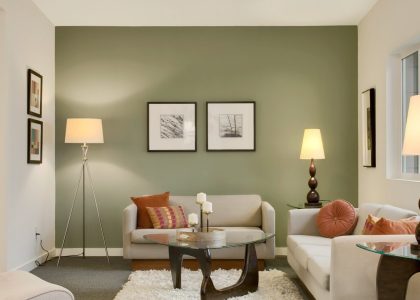Floor lamps are a versatile and practical lighting solution that can enhance the ambiance and functionality of any room. They provide both general and task lighting, making them an essential element in interior design. Whether you need to brighten up a dark corner, create a cozy reading nook, or add a touch of elegance to your living room, a lavilighting floor lamp can do it all.
One of the key benefits of floor lamps is their portability. Unlike ceiling lights or wall sconces, floor lamps can be easily moved around to different areas of the room or even different rooms altogether. This flexibility allows you to experiment with different lighting arrangements and change the mood of your space whenever you want.
Lighting plays a crucial role in interior design as it can greatly impact the overall look and feel of a room. It can highlight architectural features, create focal points, and set the mood for different activities. By choosing the right floor lamp, you can not only illuminate your space but also enhance its aesthetic appeal.
The Different Types of Floor Lamps and How to Choose the Right One for Your Room
There are several types of floor lamps available on the market, each with its own unique design and functionality. The most common types include arc lamps, tripod lamps, torchiere lamps, and pharmacy lamps.
Arc lamps feature a long, curved arm that extends over a seating area or table. They are perfect for providing overhead lighting without the need for ceiling fixtures. Tripod lamps have three legs that provide stability and a modern, minimalist look. They are great for adding a touch of style to any room.
Torchiere lamps have an upward-facing shade that directs light towards the ceiling, creating a soft and diffused glow. They are ideal for providing ambient lighting and can make a room feel larger and more inviting. Pharmacy lamps have an adjustable arm and shade, making them perfect for task lighting in a home office or reading nook.
When choosing a floor lamp, there are several factors to consider. First, think about the size of the lamp and how it will fit into your space. A large, statement floor lamp can be a focal point in a room, while a smaller lamp can blend seamlessly into the background. Next, consider the style of the lamp and how it will complement your existing decor. Whether you prefer a modern, minimalist look or a more traditional design, there is a floor lamp to suit every taste.
Functionality is also an important consideration. Think about how you will be using the lamp and what type of lighting you need. If you want to create a cozy reading nook, a floor lamp with an adjustable arm and shade would be ideal. If you need general lighting for a large living room, an arc lamp with a wide reach would be more suitable.
Floor Lamps and Interior Design: How to Create a Cohesive Look
When choosing a floor lamp, it’s important to consider how it will fit into your existing decor and create a cohesive look. The style, color, and materials of the lamp should complement the overall design of the room.
If you have a modern or minimalist decor, choose a floor lamp with clean lines and a sleek finish. A tripod lamp with a metal or wood base would be a great choice. For a more traditional or eclectic look, opt for a floor lamp with ornate details and a vintage-inspired design.
Consider the color scheme of your room when choosing a floor lamp. If you have neutral walls and furniture, you can use the lamp as an accent piece and choose a bold color or pattern. On the other hand, if you have colorful walls or furniture, opt for a more subtle and understated lamp that won’t compete for attention.
Floor lamps can also enhance the overall design of a room by adding visual interest and creating focal points. For example, a tall and sculptural floor lamp can draw the eye upwards and highlight high ceilings or architectural details. A floor lamp with a unique shade or base can also become a conversation piece and add personality to your space.
The Benefits of Using a Floor Lamp for Task Lighting
Task lighting is essential for performing specific activities such as reading, working, or cooking. It provides focused and concentrated light that helps reduce eye strain and improves productivity. Floor lamps are an excellent choice for task lighting as they can be easily positioned to provide direct light exactly where you need it.
A reading nook is a perfect example of how a floor lamp can provide effective task lighting. Place a floor lamp next to your favorite armchair or sofa and adjust the height and angle of the lamp to direct light onto your book or magazine. This will create a cozy and inviting space where you can relax and enjoy your reading.
In a home office, a floor lamp with an adjustable arm and shade can provide focused lighting on your desk. This will help reduce glare on your computer screen and make it easier to see documents and other materials. By choosing a floor lamp with a built-in dimmer switch, you can also adjust the brightness of the light to suit your needs throughout the day.
Floor Lamps and Mood Lighting: Creating the Perfect Ambiance
Mood lighting is all about creating a specific atmosphere or ambiance in a room. It can make a space feel cozy, intimate, relaxing, or even romantic. Floor lamps are an excellent tool for creating mood lighting as they can be easily adjusted to control the intensity and direction of the light.
To create a relaxing atmosphere in your living room or bedroom, use floor lamps with soft, diffused lighting. Torchiere lamps are perfect for this purpose as they direct light towards the ceiling, creating a warm and inviting glow. You can also use floor lamps with adjustable dimmer switches to control the brightness of the light and create a more intimate setting.
For a romantic dinner or date night at home, place a floor lamp with a fabric shade next to your dining table. The soft and warm light will create a cozy and intimate atmosphere. You can also use floor lamps with colored shades to add a touch of romance and create a unique ambiance.
How to Position Your Floor Lamp for Maximum Effectiveness

Proper placement of your floor lamp is crucial to ensure maximum effectiveness and functionality. The height and angle of the lamp should be adjusted to provide the right amount of light for the specific task or activity.
In a living room or bedroom, place the floor lamp next to a seating area or reading nook. The height of the lamp should be adjusted so that the light is directed towards the seating area or reading material. This will provide focused lighting without causing glare or shadows.
In a home office, position the floor lamp next to your desk or work area. The height and angle of the lamp should be adjusted so that the light is directed onto your work surface. This will provide focused lighting that reduces eye strain and improves productivity.
When positioning your floor lamp, consider the overall layout and flow of the room. Make sure that the lamp doesn’t obstruct any pathways or create any safety hazards. If you have multiple floor lamps in a room, experiment with different placements to create a balanced and harmonious lighting scheme.
Floor Lamps and Energy Efficiency: Choosing the Right Bulb for Your Lamp
Energy efficiency is an important consideration when choosing a floor lamp. By using energy-efficient bulbs, you can reduce your energy consumption and save money on your electricity bills.
LED bulbs are the most energy-efficient option for floor lamps. They use up to 80% less energy than traditional incandescent bulbs and can last up to 25 times longer. LED bulbs also produce less heat, making them safer to use and reducing the risk of fire.
When choosing a bulb for your floor lamp, consider the color temperature and brightness. LED bulbs are available in a range of color temperatures, from warm white to cool white. Warm white bulbs create a cozy and inviting atmosphere, while cool white bulbs provide a brighter and more focused light.
The Latest Trends in Floor Lamps: From Minimalist to Bold and Colorful
Floor lamps come in a wide variety of styles and designs, and there are always new trends emerging in the world of lighting design. Whether you prefer a minimalist look or a bold and colorful statement piece, there is a floor lamp to suit every taste.
One of the current trends in floor lamp design is minimalism. Clean lines, simple shapes, and neutral colors are key features of minimalist floor lamps. These lamps are perfect for creating a sleek and contemporary look in any room.
Another popular trend is the use of natural materials such as wood and rattan. Floor lamps with wooden or woven bases can add warmth and texture to a space. They are perfect for creating a cozy and inviting atmosphere in living rooms, bedrooms, or reading nooks.
Bold and colorful floor lamps are also gaining popularity. These lamps feature vibrant shades or bases in eye-catching colors such as red, blue, or yellow. They can add a pop of color to an otherwise neutral room or complement an existing color scheme.
Maintaining Your Floor Lamp: Tips for Cleaning and Repairing
To ensure that your floor lamp lasts for years, it’s important to clean and maintain it regularly. Dust and dirt can accumulate on the lampshade, base, and other parts of the lamp, affecting its performance and appearance.
To clean your floor lamp, start by unplugging it from the power source. Use a soft cloth or duster to remove any dust or dirt from the lampshade, base, and other surfaces. If the lampshade is removable, you can wash it with mild soap and water. Make sure to dry it thoroughly before reattaching it to the lamp.
If your floor lamp is not working properly, there are a few common issues that you can try to fix yourself. First, check the bulb to make sure it is properly screwed in and not burnt out. If the bulb is fine, check the power cord for any damage or loose connections. If you are unsure how to fix the issue, it’s best to consult a professional electrician.
Why a Floor Lamp is a Must-Have for Any Stylish Space
In conclusion, floor lamps are a versatile and practical lighting solution that can enhance the ambiance and functionality of any room. They provide both general and task lighting, making them an essential element in interior design. By choosing the right floor lamp, you can not only illuminate your space but also enhance its aesthetic appeal.
There are several types of floor lamps available on the market, each with its own unique design and functionality. When choosing a floor lamp, consider factors such as size, style, and function. Think about how the lamp will fit into your existing decor and create a cohesive look.
Floor lamps can provide effective task lighting in various areas of the home, such as reading nooks and home offices. They can also be used to create different moods in a room by adjusting the intensity and direction of the light.
Proper placement of your floor lamp is crucial to ensure maximum effectiveness and functionality. Consider the height and angle of the lamp and adjust it accordingly for optimal lighting.
Energy efficiency is an important consideration when choosing a floor lamp. LED bulbs are the most energy-efficient option and can help reduce your energy consumption and save money on your electricity bills.
There are always new trends emerging in floor lamp design, from minimalist to bold and colorful styles. Choose a floor lamp that reflects your personal style and complements your existing decor.
To ensure that your floor lamp lasts for years, clean and maintain it regularly. If you encounter any issues, consult a professional electrician for repairs.
In conclusion, a floor lamp is a must-have for any stylish space. It provides both functionality and aesthetic appeal, making it an essential element in interior design. Whether you need to brighten up a dark corner, create a cozy reading nook, or add a touch of elegance to your living room, a floor lamp can do it all. So go ahead and add a floor lamp to your home decor and enjoy the benefits it brings.


